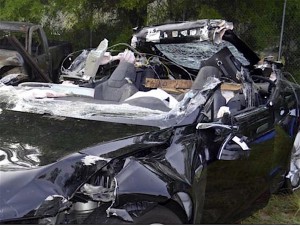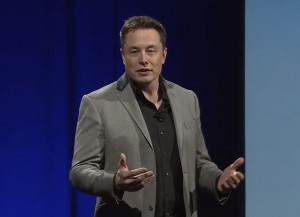Tesla vehicles equipped with Autopilot will be the safest cars on the road once the company completes the over-the-air update to the program in the next two weeks, according to CEO Elon Musk.
“The Model S and X are by far the safest car on the road. I don’t think there is another car that’s within a multiple of the S and the X,” he said during a press conference announcing the upgrade.
The upgraded version of Autopilot required new software to allow the system to become more reliant on the systems radar-based sensors. Prior to the new system, the semi-autonomous program relied on camera-based sensors to recognize objects on the road.
It would take that information and crosscheck it against the radar data in order to make decisions. That is no longer the case, Musk said.
“[The system is] going from camera as the primary system supplemented by radar, but now in addition radar is a primary [system] … it’s no longer a supporting character, but a star,” Musk said.
The update requires no new sensors or cameras, which has some questioning if the current set up is enough. Others use Lidar and other equipment to bolster the total package. Musk said that the company will not need to use more than the current trio of cameras, radar and GPS-based tracking with the new software.
The latest iteration required the company to produce software that hasn’t been developed by anyone else. In addition to being able to better deal with the light issues that appear at the root of the fatal crash that occurred in Florida in May, it dramatically cuts down on “false positives” that create false braking events.

Musk said he believes the new version of Autopilot would have prevented this fatal crash of this Model S earlier this year.
The new system is better able to detect metallic objects, like other vehicles, as well as “dense” objects, such as a moose and initiate the braking system appropriately. Also by using radar, the system can “see” around the vehicle in front of the Model S or X equipped with newest version of Autopilot.
(Apple may back away from auto manufacturing. For more, Click Here.)
It “bounces” the radar around a vehicle traveling in front of a Tesla to determine if there are objects that may need to be avoided. Additionally, the new version makes it more difficult to “cheat” the system as many owners have shown how to do.
Now, if the driver doesn’t place a hand on the steering wheel in the time provided, it will disengage and cannot be re-engaged until the driver pulls the vehicle over, turns it off and restarts it. Also the vehicle’s emergency braking system has been enhanced. The new system improves the odds that the car will be brought to a halt less harshly.
Also the autosteer portion of Autopilot will now “nudge” a driver back on to the road if the system, even when not activated, senses that the vehicle is leaving a lane and a crash is imminent, Musk says. It won’t put car back into its lane as if nothing happened, but it will get the vehicle back on tarmac.
Overall, Musk said there have been 200 enhancements, large and small, to the new system. Much of them centered on the improved software, which he’s been pushing for since last year.
(Click Here for more about Tesla’s claim that European crash didn’t involve Autopilot.)
“I was told it can’t be done, that no one’s been able to make it work,” he said. “I worked hard on questioning those assumptions. It’s a really hard problem. No one else has solved this. I want everyone to understand that this is not going from bad to good. They’re already good. There better than if there weren’t [a system]. This is going from good to great. It’s a threefold improvement in safety.”
The improved system hasn’t officially been endorsed by federal safety agencies yet. Transportation Secretary Anthony Foxx has pushed to improve the safety of vehicles on U.S. roadways. He’s been supportive of the idea of autonomous vehicles as a means to that end, but cautiously so.
Musk said that Tesla’s involved the National Highway Traffic Safety Administration in the process and said that officials appeared “pleased” with the new update, but he didn’t “want to put words in their mouths.”
He also believes that the new system would have prevented the fatal crash earlier this year. “We believe it would have. These things cannot be said with absolute certainty, but we believe it would see a large metal object over the road [as a truck] not a sign.”
(Tesla looks to upgrade controversial Autopilot program. Click Here for the story.)
The CEO was cautious to not that traffic fatalities will never be eliminated, saying there is no such thing as “perfect safety,” adding ”I’m highly confident this will be a substantial improvement … a massive enhancement. I wish we could have done this earlier, but you just can’t come fully formed into some solution.”

